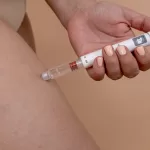A new study has highlighted cost-effective interventions to address postpartum hemorrhage (PPH), the leading cause of maternal deaths in low-resource settings. The study, led by Burnet public health registrar Dr. Joshua Ginnane, examined care bundles and medications designed to prevent and treat excessive blood loss following childbirth, which can be life-threatening if not promptly addressed. The findings were published in the journal PLOS Medicine under the title, “The cost-effectiveness of preventing, diagnosing, and treating postpartum hemorrhage: a systematic review of economic evaluations.”
Postpartum hemorrhage is a medical emergency that often occurs after delivery and poses a significant risk to maternal health, particularly in areas with limited access to healthcare resources. Dr. Ginnane explained that the study was aimed at analyzing the most effective and cost-efficient ways of preventing, diagnosing, and treating PPH. “We identified 56 studies across 16 interventions, summarized the findings in a comparable way, and pinpointed those that are both effective and cost-effective,” he said.
The research revealed that integrating multiple interventions into care bundles can reduce costs while improving outcomes. These bundles include administering uterotonic drugs to stimulate uterine contractions, measuring blood loss quantitatively, and implementing tiered treatment responses based on the severity of the hemorrhage. The simultaneous use of these interventions has been shown to prevent or mitigate the condition more effectively than individual measures alone.
Dr. Ginnane noted that one of the most significant findings from the study was the cost-effectiveness of adding tranexamic acid, an antifibrinolytic drug used to reduce bleeding, to more traditional uterotonic treatments. “There are many different interventions for postpartum hemorrhage, but we found consistent evidence that combining tranexamic acid with uterotonics was cost-effective in a wide range of settings,” he added.
The study also addressed gaps in the evidence supporting certain treatments recommended by the World Health Organization (WHO). These include specialized garments designed to treat shock and devices to stop bleeding, which require further research to assess their cost-effectiveness in various healthcare settings.
Dr. Ginnane emphasized the importance of continuing research to refine strategies for combating PPH and ensuring that life-saving interventions are accessible to all women, particularly those in low-income areas. “By carefully evaluating which treatments are the most cost-effective, governments can ensure their spending has the greatest possible impact,” he said.
The findings of this study hold significant implications for policymakers, healthcare providers, and organizations focused on maternal health, particularly in resource-constrained environments where the burden of postpartum hemorrhage remains disproportionately high.
For more information, the full study can be accessed in PLOS Medicine: Joshua F. Ginnane et al., “The cost-effectiveness of preventing, diagnosing, and treating postpartum haemorrhage: A systematic review of economic evaluations,” PLOS Medicine (2024). DOI: 10.1371/journal.pmed.1004461.












